This article explores the current trends in the treatment of neurodevelopmental disorders and examines key tools in neurorehabilitation such as virtual and augmented reality, artificial intelligence, personalized therapies, and the multidisciplinary approach to address these conditions in a comprehensive and effective way.
Neurodevelopmental disorders include a variety of conditions that affect the development of the nervous system, such as autism spectrum disorder (ASD), attention deficit hyperactivity disorder (ADHD), intellectual disability, and specific learning disorders. Neurorehabilitation has advanced significantly in the last decade, adopting personalized approaches and innovative technologies that optimize treatment and improve the quality of life of people affected by these neurodevelopmental disorders.
What are neurodevelopmental disorders?
Los trastornos del neurodesarrollo son alteraciones que afectan el desarrollo neurológico y pueden impactar de manera significativa en las habilidades cognitivas, motoras, sociales y de comunicación de una persona.
Among the most common conditions are:
- Autism spectrum disorder (ASD): Characterized by difficulties in social interaction, communication, and specific behavior patterns.
- Attention deficit hyperactivity disorder (ADHD): Presents with difficulties regulating attention and impulsivity, with or without hyperactivity.
- Intellectual disability: Involves significant limitations in intellectual functioning and in adaptive skills for daily life.
- Specific learning disorders: Include difficulties in key areas such as reading, writing, and mathematics.
These disorders require a specialized approach in neurorehabilitation, which through innovative and personalized therapies seeks to improve the quality of life and the comprehensive development of the people affected.

Subscribe
to our
Newsletter
Main trends in the treatment of neurodevelopmental disorders
1. Early diagnosis and personalization of therapies in neurodevelopmental disorders
What are early diagnosis and the personalization of therapies?
Early diagnosis is key to success in the treatment of neurodevelopmental disorders, since it allows intervention in the early stages of brain development, when therapies have a greater impact. Currently, neurorehabilitation specialists use neuropsychological assessments and advanced digital tools to detect these disorders in early childhood, enabling the creation of a personalized intervention plan tailored to each user’s needs.
For its part, personalized therapies are designed taking into account each person’s individual characteristics, including their neurological and emotional profile. The personalization of therapies is especially important in the treatment of conditions such as autism spectrum disorder (ASD), in which each person presents a unique set of symptoms and different challenges, since it allows optimizing outcomes in the development of social, cognitive, and motor skills.
Tools for the personalization of therapies in neurodevelopmental disorders
- Detailed neuropsychological assessments: Help identify specific areas for improvement and guide treatment precisely.
- Artificial intelligence (AI): AI allows predicting each user’s response to different interventions, facilitating a more effective and tailored treatment.
- Real-time monitoring software: Allows tracking users’ progress and adjusting therapies based on their results, ensuring a personalized and dynamic approach.
Benefits of personalizing therapies in neurorehabilitation of neurodevelopmental disorders
- Superior therapeutic efficacy: Personalized therapies achieve a greater impact on the development of key skills, significantly improving cognitive, motor, and social abilities.
- Increased motivation and family engagement: Tailored interventions not only involve users but also their families, fostering long-term commitment and improving therapy outcomes.
2. Virtual reality (VR) and augmented reality (AR) in neurodevelopmental disorders
What are virtual reality and augmented reality?
Virtual reality (VR) and augmented reality (AR) technologies have become valuable tools in the neurorehabilitation of neurodevelopmental disorders. These innovative technologies create simulated and augmented environments where users can practice and develop social, motor, and cognitive skills in a safe and controlled context.
Virtual reality allows users to immerse themselves in a digital environment designed to work on specific skills, such as emotion recognition and communication for those with autism spectrum disorder (ASD).
In turn, augmented reality overlays digital elements onto the real environment, which facilitates practicing tasks in everyday contexts and offers an immersive and realistic learning experience.
Key factors in the use of virtual reality and augmented reality in neurodevelopmental disorders
- Interactivity and engagement: These technologies increase the active participation of users, improving treatment adherence and their engagement with therapy.
- Real-time feedback: They allow continuous assessment of skills and provide immediate feedback to help adjust therapies according to progress.
- Adaptability and personalization: Virtual reality (VR) and augmented reality (AR) programs can be adapted to each person’s individual needs, adjusting the difficulty of exercises based on each user’s progress and ensuring a personalized and effective experience.
Benefits of using artificial intelligence and augmented reality in neurorehabilitation
- Cognitive and sensory stimulation: Both virtual reality and augmented reality make it possible to work on crucial skills such as attention, memory and perception, essential in the treatment of neurodevelopmental disorders.
- Improvement of social skills: In the specific case of people with ASD, these technologies facilitate practicing social interaction in a safe environment, strengthening communication skills and fostering empathy.
- Increased autonomy: Virtual reality and augmented reality help develop functional skills that increase each user’s independence, improving their quality of life and ability to adapt in real environments.
3. Artificial intelligence (AI) in the treatment of neurodevelopmental disorders
What is artificial intelligence (AI)?
Artificial intelligence (AI) is a branch of computer science that seeks to develop systems and programs capable of performing tasks that normally require human intelligence, such as voice recognition, decision making, problem solving and learning. It is based on algorithms and models that allow machines to progressively learn.
AI is transforming the treatment of neurodevelopmental disorders by improving the precision and personalization of interventions. Through the analysis of large volumes of clinical data, artificial intelligence systems identify specific patterns in each user’s development, which allows for tailored intervention and continuous optimization of treatment.
Applications of AI in the treatment of neurodevelopmental disorders
- Predictive assessment: AI can predict each user’s response to different interventions, allowing the treatment plan to be adjusted based on expected outcomes.
- Real-time adaptation of therapeutic content: AI-based systems allow therapists to adjust therapy content in real time, improving each user’s engagement and ensuring steady progress.
- Personalized guidance for parents and caregivers: Artificial intelligence (AI) offers individualized recommendations so that parents and caregivers can support treatment at home, increasing the effectiveness of neurorehabilitation outside the clinical setting.
Benefits of AI in neurorehabilitation of neurodevelopmental disorders
- Optimization of therapeutic outcomes: AI improves the precision of interventions, achieving a positive impact on users’ cognitive, social and motor development.
- Personalized progress monitoring: AI facilitates continuous, personalized monitoring, allowing therapy to be adjusted according to the changing needs of the user and maximizing the effectiveness of each session.
- Comprehensive support for families: By providing AI tools that involve families in the rehabilitation process, active participation and a supportive environment that reinforce the treatment are promoted.
4. Multidisciplinary approach in the neurorehabilitation of neurodevelopmental disorders
What is the multidisciplinary approach?
The multidisciplinary approach is one of the most effective methods for the treatment of neurodevelopmental disorders, since it combines the expertise of various professionals such as neuropsychologists, occupational therapists, speech therapists and other specialists to offer a comprehensive and personalized treatment.
The multidisciplinary approach in neurorehabilitation involves the close collaboration of specialists who, from their areas of knowledge, design and implement a comprehensive treatment plan. Each professional brings a unique perspective, which allows a complete assessment of each user’s needs and an intervention adapted to their specific characteristics.
Key factors in implementing the multidisciplinary approach
- Constant communication: Collaboration and fluid communication among specialists ensure a cohesive and consistent treatment.
- Comprehensive and personalized assessment: Each professional contributes a detailed evaluation from their area, providing a complete view of users’ strengths and needs.
- Individualized planning: This approach allows developing a treatment plan tailored to the particular needs of each person, maximizing outcomes.
Benefits of the multidisciplinary approach in neurorehabilitation
- Comprehensive and effective treatment: This method addresses all areas of development, including motor, cognitive, emotional and social skills, achieving balanced and complete development.
- Improvement in quality of life: Users who receive comprehensive care experience significant improvements in their quality of life and their ability to interact with their environment.
- Family empowerment: Family involvement is essential, and this approach empowers them to provide effective daily support, strengthening the neurorehabilitation process.
Conclusions about current trends in the treatment of neurodevelopmental disorders
Current trends in the treatment of neurodevelopmental disorders are transforming neurorehabilitation, offering new opportunities to improve each user’s quality of life.
Innovations such as virtual reality (VR), artificial intelligence (AI) and the multidisciplinary approach enable personalized and effective rehabilitation, adapted to each person’s individual needs. As research and technology advance, these tools will continue to revolutionize the treatment of neurodevelopmental disorders such as autism spectrum disorder (ASD), attention deficit hyperactivity disorder (ADHD) and intellectual disability, providing a promising future for both users and their families.
If you liked this blog post about the current trends in the treatment of neurodevelopmental disorders, you will likely be interested in these NeuronUP articles:
“This article has been translated. Link to the original article in Spanish:”
Tendencias actuales en el tratamiento de trastornos del neurodesarrollo
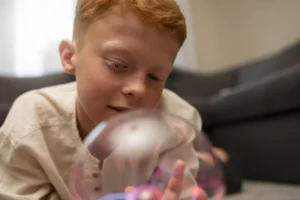

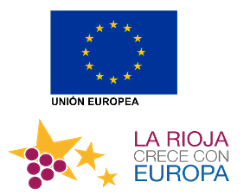
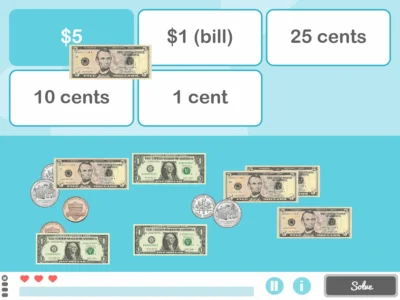

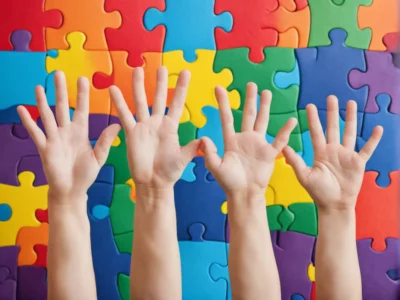
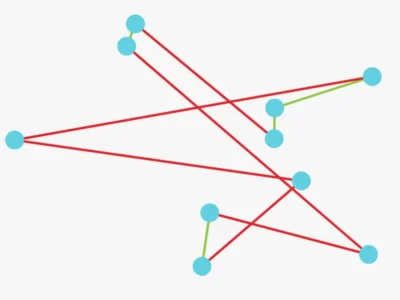
 What is the ecological validity of NeuronUP?
What is the ecological validity of NeuronUP?
Leave a Reply